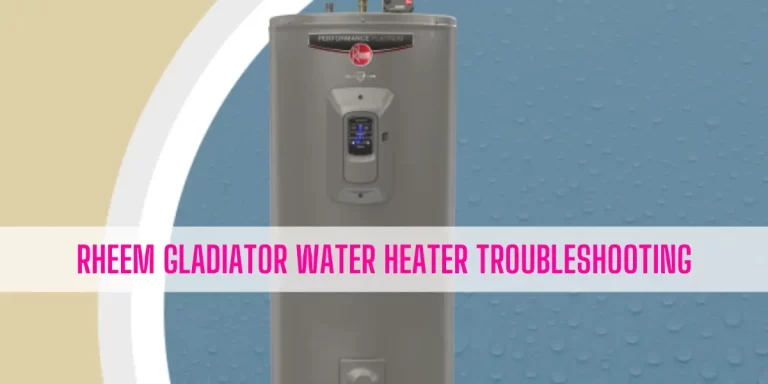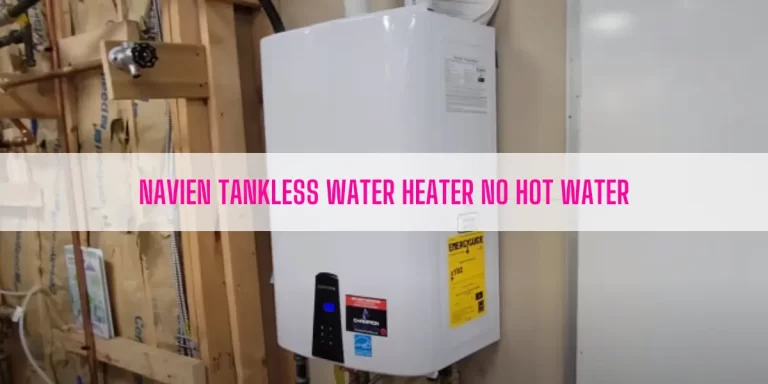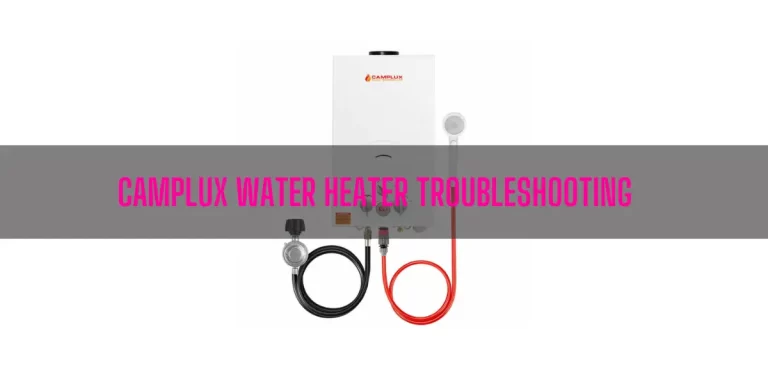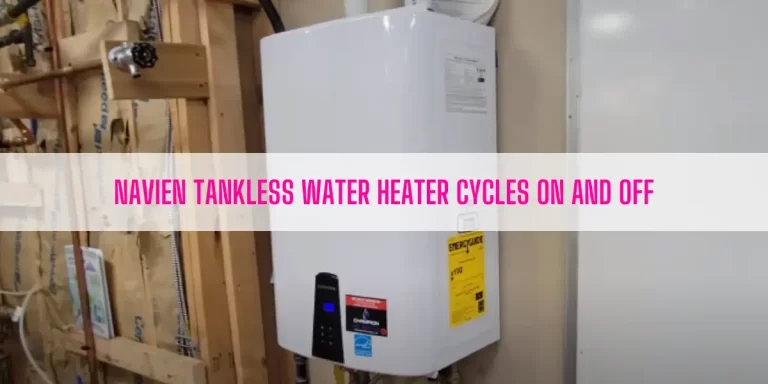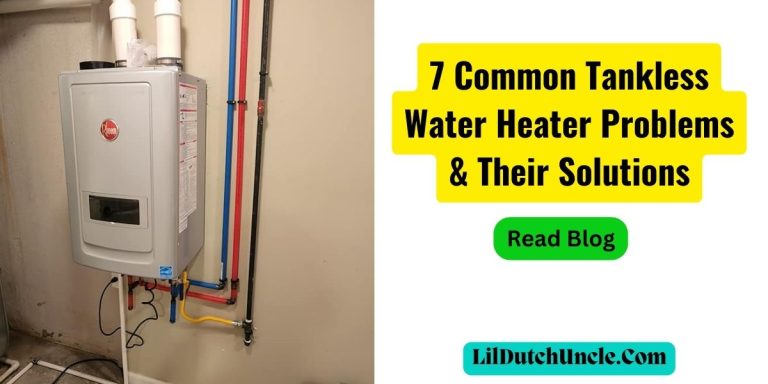Thermostat is an indispensable part of an electric water heater. It will help you control the water temperature of your water heater. If it gets faulty, your water heater will produce excessive hot water and bring many damages.
In this guide on AO Smith Water Heater Thermostat Problems, I will break down:
- 5 possible culprits that cause the thermostat of your water heater to go bad
- How to replace thermostat on AO Smith Tankless Electric Water Heater
So, let’s dive in.
Table of Contents
- AO Smith Water Heater Thermostat Problems [5 Common Reasons]
- AO Smith Water Heater Thermostat Replacement: The How-To Step
- FAQs
- End-Note
AO Smith Water Heater Thermostat Problems [5 Common Reasons]
Every electric water heater, including your AO Smith, has thermostats to control the water temperature. This component flows the electricity to heating elements by opening and closing contacts.
If the thermostat is at fault, like getting electrically shorted, it will heat the water excessively. As a result, you will get too hot water or it may bring other damage to the unit.
Below, I will break down 5 possible reasons that can cause the thermostat to go bad.
01. Thermostat Itself Is At Fault
If your thermostat keeps tripping or the reset button, my first suspect goes to the thermostat. Every electric water heater has two thermostats- upper and bottom. The upper thermostat heats the upper part of the tank and the bottom one is the lower part of the tank.
Without a second thought, I bet you will get overheated water if one of the two thermostats gets defective. And it will keep tripping the reset button until you take any actions regarding this.
How To Fix:
Before making up your mind for replacing the thermostats, the first step you should take is to inspect the thermostats electrically. You can’t firmly say whether the upper or the bottom thermostat is at fault until you test them.
Ensure you turn off the electric supply to the unit at the circuit breaker. Then, use a Phillips head screwdriver to remove the upper access panel. Then, fold away the insulation and pull out the plastic protective cover.
Don’t forget to disconnect the power waters from the thermostat terminals.
Now, attach one probe of your multimeter to the left side terminal by the red reset button and connect the other end of the probe to the other terminal on the left side of the reset button.
A healthy thermostat should give zero continuity. If the multimeter doesn’t give a reading close to zero, you should replace the upper thermostat.
Follow the same steps when it comes to testing the bottom thermostat for continuity. If the result is zero, the lower thermostat is good. Otherwise, you should replace the lower thermostat.
You can also watch this tutorial if you don’t know how to test the thermostat for continuity:
02. Defective Energy Cut-off Switch
Reset button or ECO (energy cut-off switch) is part of the upper thermostat. It’s a safety feature of a water heater. When the water temperature inside the tank exceeds the safety level (over 180-degree F.), it will trip the thermostat automatically.
But if the switch gets defective, it can’t cut the electric supply off. Consequently, your heater keeps heating the water and the excessive hot water burns out the thermostat. In the worst case, it can cause fire or other accidents.
How To Fix:
If the ECO or reset button gets defective, you need to replace the entire upper thermostat as this switch is the part of the thermostat. I will show you how to replace the upper thermostat at the end of this guide. So, keep reading.
03. Loose or Damaged Wiring
Loose wiring can also be a culprit that causes the thermostat to blow away. Unfortunately, you can’t fix this issue by yourself as it requires electrical knowledge.
How To Fix:
I suggest you hire a professional electrician to check the wiring of your water heater. Don’t try to handle this. Otherwise, it will shock you. What you can do is- just turn the electric supply off to your water heater.
04. Defective Heating Elements
An electrically shorted heating element can also trip your water heater thermostats. If the heating element gets shorted, it will heat the water excessively. In return, it doesn’t only bring damage to the thermostat but also damages other parts of the unit. Sometimes, it may cause fires and shocks.
How To Fix:
First off, disconnect your water heater from electric connections at the circuit breaker. You must drain your water heater before inspecting the heating elements. So, check the manual and drain the water out of the tank.
Then, remove the access panel and fold away the insulation to access both the thermostat and the heating elements. The following video will help you check the continuity of the heating element. If you don’t get any continuity, you must replace it.
And this video will help you in replacing the heating element on your AO Smith Electric Tankless Water Heater:
Following the same steps I mentioned, remove the bottom heating element and inspect it. If needed, replace it with a new one.
05. Defective Circuit Breaker
If your AO Smith Water Heater keeps tripping the thermostat itself, the problem may be the circuit breaker. Over time, every electric appliance starts mal-functioning. And the circuit breaker is not an exception to that.
How To Fix:
You need to replace the faulty circuit breaker with a new one. So, flip the breaker to the off position and call a certified electrician to change the old circuit breaker to solve this issue.
AO Smith Water Heater Thermostat Replacement: The How-To Step
The previous chapter discusses the reasons behind a tripped thermostat. And when your thermostat is at fault, you need to replace it for proper water heater operation. First off, get a new thermostat replacement on Amazon or Lowes. Then, follow the below steps to replace the thermostat:
- Shut off the power to the unit.
- Use a Phillips head screwdriver to remove the upper access panel.
- Fold away the insulation and remove the plastic protective cover to access the thermostat.
- Disconnect the wiring from the thermostat terminals.
- Pull out the old thermostat from the unit.
- Install the new thermostat and connect the wiring to the right terminals.
- Put everything like plastic cover, insulation, and access panel into its place.
- Finally, turn the electric supply on.
You can also follow those ways to replace the lower thermostat.
FAQs
How do I reset the thermostat on my A.O. Smith water heater?
- Start with shutting off the electric supply to the unit at the circuit breaker.
- Unscrew the upper access panel and remove the insulation.
- Press the red reset button inward and it will reset the thermostat.
- Now, replace everything into its place and turn the electric supply on.
Why is my A.O. Smith water heater not getting hot?
Your AO Smith water heater is not getting hot due to these reasons:
- Unit gets no electric power
- Burn out upper heating element
- Broken thermostat
- Energy cut-off switch gets tripped
Are there any recalls on A.O. Smith water heaters?
Yes, there were recalls on AO Smith Water Heaters and this manufacturer recalled about 616,000 water heaters. You can read this article on ComsumerReports.Org to learn more about it.
End-Note
Replace the bad thermostat to use your AO Smith Water Heater smoothly. I mentioned what steps you should follow to change the thermostat. So, go along with the step-by-step guide and make the replacement. Good Luck!
Read Also:
- AO Smith Water Heater Reset Button
- Ao Smith Electric Water Heater Troubleshooting
- AO Smith Water Heater Troubleshooting Codes
- AO Smith Tankless Water Heater Stuck In Standby Mode

Eric Alvarez is the head of content on LilDutchUncle.Com. He is an HVAC guy based in El Paso, Texas, United States. He obtained his Bachelor of Science degree from the University Of Texas at El Paso. Years of experience in the HVAC field have taught him many lessons, not the least of which is that the value of quality and knowledge far exceeds any promised initial savings. He has a good standing reputation for superior skills in heating, air conditioning, hot water tanks, and indoor air quality systems.
